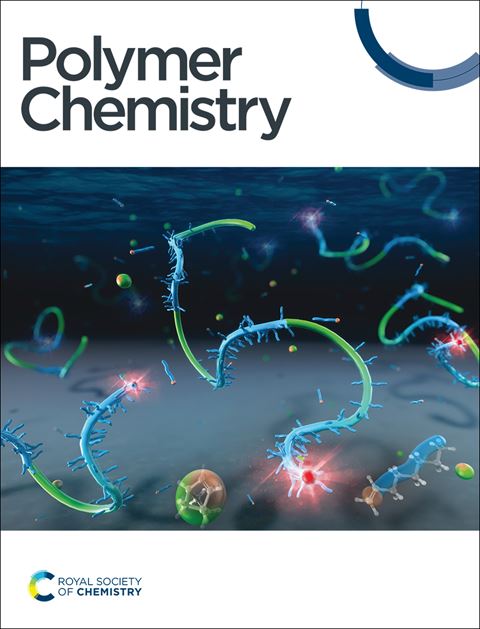Tuning the linkage microenvironment in imine-based covalent organic frameworks for enhanced photocatalytic hydrogen production
IF 4.1
2区 化学
Q2 POLYMER SCIENCE
引用次数: 0
Abstract
Rational design of covalent organic frameworks (COFs) at the molecular level is necessary to improve the photocatalytic hydrogen evolution (PHE) performance. Herein, a photosensitive two-dimensional (2D) COF, namely ImTF–PD, is first constructed through the condensation of 1,3,6,8-tetra(4-formylphenyl)pyrene (TFPPy) and p-phenylenediamine (PD) under solvothermal conditions. The photocatalytic activity of ImTF–PD is regulated by transforming imine linkages into quinoline through the Povarov reaction between the imine groups and phenylacetylene and 4-ethynylbenzonitrile, respectively. Such a post-synthetic modification (PSM) process enables the modulation of π-conjugation and simultaneously the introduction of the electron-deficient nitrile group improves the local electron delocalization of the skeleton of ImTF–PD. As a result, the modified quinoline based COF (Qu-CN) exhibited outstanding and steady hydrogen production with a maximum hydrogen production rate of 245.17 mmol g−1 h−1 under visible-light irradiation (λ ≥ 420 nm). Experimental and computational results revealed that Qu-CN with better electron–hole separation and lower band gap significantly improved the catalytic activity regarding kinetics and thermodynamics. This study reveals that enhancing π-conjugation and tuning the local electronic environment of COF-based photocatalysts provide a convenient and effective approach for the development of new efficient photocatalysts.

调整亚胺基共价有机框架的连接微环境以增强光催化制氢
在分子水平上合理设计共价有机框架(COFs)是提高光催化析氢性能的必要条件。本文首先在溶剂热条件下,通过1,3,6,8-四(4-甲苯基)芘(TFPPy)和对苯二胺(PD)的缩合,构建了一个光敏二维(2D) COF,即ImTF-PD。ImTF-PD的光催化活性是通过亚胺基团与苯基乙炔和4-乙基苯腈的Povarov反应将亚胺键转化为喹啉来调节的。这种合成后修饰(PSM)过程可以调制π共轭,同时引入缺电子腈基,改善了ImTF-PD骨架的局部电子离域。结果表明,在可见光(λ≥420 nm)照射下,改性喹啉基COF (Qu-CN)的产氢速率最高可达245.17 mmol g−1 h−1。实验和计算结果表明,具有较好电子空穴分离和较低带隙的Qu-CN在动力学和热力学方面显著提高了催化活性。本研究表明,增强π共轭和调整cof基光催化剂的局域电子环境为开发新型高效光催化剂提供了方便有效的途径。
本文章由计算机程序翻译,如有差异,请以英文原文为准。
求助全文
约1分钟内获得全文
求助全文
来源期刊

Polymer Chemistry
POLYMER SCIENCE-
CiteScore
8.60
自引率
8.70%
发文量
535
审稿时长
1.7 months
期刊介绍:
Polymer Chemistry welcomes submissions in all areas of polymer science that have a strong focus on macromolecular chemistry. Manuscripts may cover a broad range of fields, yet no direct application focus is required.
 求助内容:
求助内容: 应助结果提醒方式:
应助结果提醒方式:


